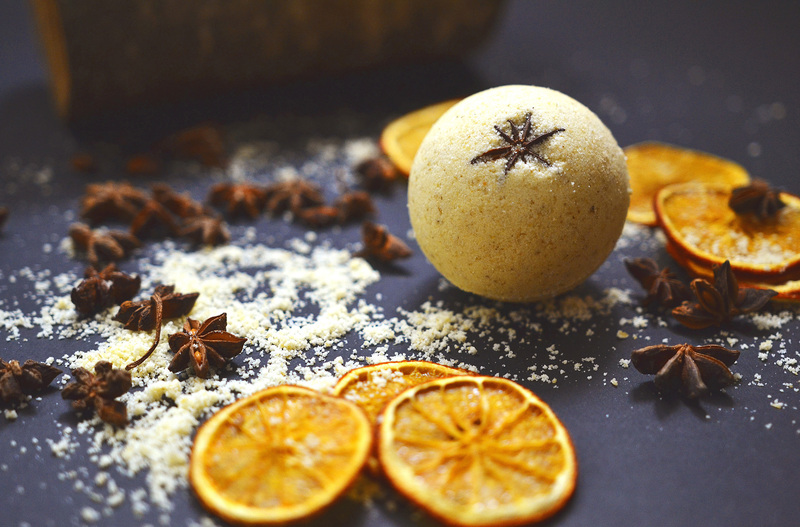Master the Art of Cleaning Window Sill Mould
Posted on 04/06/2025
Master the Art of Cleaning Window Sill Mould
Window sill mould is a common household nuisance that can compromise not only the aesthetic look of your home but also pose potential health risks. Whether you're facing black specks, greenish patches, or musty odors around your windows, learning how to clean window sill mould efficiently is essential for maintaining a healthy and pleasant living environment.

Understanding Window Sill Mould
Mould on window sills is more than just an unsightly stain; it can deteriorate the integrity of your window frames, cause paint to peel, and even exacerbate respiratory issues for household members. Common causes of mould on window sills include condensation, inadequate ventilation, leaks, or humid climates. Knowing why and how mould develops helps you take proactive steps to prevent its growth and reappearance.
Why Is Window Sill Mould a Problem?
- Aesthetic Damage: It diminishes the overall appearance of your windows and interiors.
- Structural Deterioration: Persistent mould can cause wood rot, warping, and paint blistering.
- Health Risks: Mould spores may trigger allergies, asthma, and other respiratory issues, particularly in children and the elderly.
- Unpleasant Odor: Mould creates a musty smell that can permeate your indoor space.
Essential Supplies for Cleaning Window Sill Mold
Before tackling mould removal on your window sills, it's wise to assemble the right cleaning agents, safety gear, and basic supplies for effective results.
- Protective gloves and mask (to prevent inhaling mould spores)
- Soft-bristle brush or old toothbrush
- Microfiber cloths or paper towels
- Spray bottle
- White vinegar or hydrogen peroxide
- Baking soda
- Dish soap (optional, for additional cleaning power)
- Vacuum with HEPA filter (for initial mould spore removal)
Avoid mixing bleach with ammonia or vinegar, as this produces toxic fumes.
Step-by-Step Guide to Cleaning Mould from Window Sills
_Ready to master the art of cleaning window mould and keeping your home safe? Follow these detailed steps:_
1. Prep the Area for Mould Cleaning
- Open your windows for adequate ventilation.
- Put on gloves and mask to avoid direct contact with spores.
- Lay down old newspaper or towels to protect window ledges and flooring.
2. Remove Loose Mould Spores
Start by using a vacuum with a HEPA filter attachment to gently remove loose mould spores and dust from your window sill. Dispose of or thoroughly clean the filter afterward to prevent spore recirculation.
3. Apply a Mould-Busting Solution
- White Vinegar: Fill a spray bottle with undiluted white vinegar and saturate the affected area. Vinegar is a natural mould killer that penetrates porous surfaces.
- Hydrogen Peroxide: Alternatively, spray 3% hydrogen peroxide onto the mould patches. Let it sit for 15 minutes before scrubbing.
- Baking Soda Paste: Create a paste using water and baking soda. Apply it to stubborn mould and let it sit for 10 minutes.
4. Scrub the Window Sill
Use a soft-bristle brush or old toothbrush to gently scrub away the mould. For crevices and grooves, employ a cotton swab or smaller brush.
- Work the brush in circular motions to lift mould from porous areas.
- Repeat the process until all visible mould is gone.
5. Rinse and Wipe Down
Use a clean, damp microfiber cloth to wipe away cleaning residues and remaining mould. Be thorough in this stage--any lingering moisture or mould particles can encourage regrowth.
6. Dry the Window Sill Completely
- Open the windows and allow fresh air to circulate.
- Use paper towels or a dry cloth to ensure the sill is completely dry. Moisture is a major culprit in future mould outbreaks.
Preventing Future Window Sill Mould
Cleaning window sill mould effectively is half the battle - preventing its return is equally important. Here are expert-approved steps to keep your window sills mould-free all year round:
1. Control Indoor Humidity
- Use a dehumidifier in especially damp rooms.
- Keep humidity levels at or below 50%.
- Utilize exhaust fans in kitchens and bathrooms.
2. Improve Air Circulation
- Regularly open windows to allow airflow.
- Keep curtains and blinds open during the day, especially when it's sunny.
3. Fix Leaks and Seal Windows
- Inspect window caulking and perform repairs as necessary.
- Address roof or gutter leaks to prevent water infiltration near windows.
4. Regular Cleaning Routine
- Clean window sills weekly to remove dust and moisture.
- Check for early signs of mould after rain or high humidity periods.
5. Use Mould-Resistant Paint or Sealant
Applying a mould-resistant paint or sealant to your window sills can create a protective barrier, making it harder for mould spores to establish themselves.
Natural Alternatives for Mould Removal from Window Sills
If you prefer chemical-free methods or have sensitive skin and lungs, these natural cleaners for window mould deserve a place in your cleaning arsenal:
- Tea Tree Oil Solution: Mix two teaspoons of tea tree oil in two cups of water, spray on the area, and let sit for at least an hour. Wipe clean and allow to dry.
- Lemon Juice: The natural acidity of lemon juice helps kill mould and leave a fresh scent. Apply directly and scrub gently.
- Baking Soda Spray: Dissolve a tablespoon of baking soda in a cup of warm water and use as a daily preventative after cleaning your sills.
When to Call a Professional for Window Sill Mold
While most homeowners can handle small patches, there are times when window sill mould requires expert intervention:
- Mould covers a large area (greater than 10 square feet).
- Mould returns persistently despite thorough cleaning.
- You detect structural damage to wood or drywall around windows.
- Family members experience health symptoms linked to mould exposure.
Professional mould remediators use advanced equipment and commercial-grade treatments that ensure deep cleaning of window sill mould and address underlying moisture or air quality issues.
Health and Safety Tips for Removing Window Mould
- Always wear gloves, a mask, and eye protection to avoid skin or lung contact.
- Keep pets and children away from the work area until cleanup is complete.
- If using store-bought mould cleaners, read the label instructions carefully and ensure good ventilation.
- Dispose of contaminated cleaning materials in sealed bags.
Commonly Asked Questions about Window Sill Mould Cleaning
-
How often should I clean my window sills to prevent mould?
Aim for a light clean once a week and a thorough inspection at least every month, or after periods of heavy rain or high humidity. -
Is bleach the best solution for cleaning window sill mould?
While bleach is effective on non-porous surfaces like tiles, it's not recommended for porous window materials like wood. Vinegar and hydrogen peroxide are safer, more versatile alternatives. -
What's the difference between mould and mildew on window sills?
Mould tends to be darker (black, green, or even brown) and penetrates deeper into surfaces. Mildew is lighter in color (white or gray) and stays on the surface. Both require similar cleaning methods, but mould is more capable of causing damage and allergies.

Best Practices for Long-Term Mould Prevention
- Install double-glazing or insulated windows - These reduce condensation and provide a buffer against outside humidity.
- Maintain gutters and downspouts - Ensure water is directed away from your home's foundation and windows.
- Keep indoor plants away from window sills - Soil can harbor mould spores and increase the moisture content around your windows, especially in winter.
Conclusion: Enjoy Spotless, Mould-Free Window Sills
Mastering the art of cleaning window sill mould is all about combining regular maintenance with expert cleaning methods and ongoing prevention. By understanding how mould forms, choosing the right mould removal solutions, and implementing daily habits that discourage growth, you can protect your family's health and restore the charm of your windows. Embrace these mould cleaning tips and techniques for clear views and healthier indoor air--for good!
If you found this guide useful, don't forget to share it with friends and subscribe to our updates for more home cleaning expertise and healthy living tips.



